
The SC-100: Microsoft Certified Cybersecurity Architect Expert course is designed for experienced professionals to master the design and implementation of cybersecurity strategies across hybrid and cloud environments. It covers identity and access management, Zero Trust principles, threat protection, data governance, and compliance using Microsoft security solutions such as Microsoft Defender, Sentinel, Entra ID, and Purview. This course prepares learners to lead enterprise-wide security initiatives and successfully pass the SC-100 certification exam, validating their expertise as a Microsoft Cybersecurity Architect Expert.
Microsoft Certified: Cybersecurity Architect Expert SC-100 Training Interview Questions Answers - For Intermediate
1. How would you design a secure hybrid identity solution for an enterprise using Azure AD and on-premises Active Directory?
To design a secure hybrid identity solution, I would implement Azure AD Connect to synchronize identities from the on-premises Active Directory to Azure AD, ensuring seamless access to cloud resources. Password hash synchronization (PHS) or pass-through authentication (PTA) would be enabled depending on security and compliance requirements. I would also configure Seamless SSO to enhance user experience. Additionally, administrative accounts would not be synchronized to reduce risk. Multi-factor authentication (MFA) would be enforced for all users, especially privileged accounts, and monitoring tools like Microsoft Sentinel and Azure AD sign-in logs would be used to detect anomalies. Role-based access control (RBAC) and Conditional Access policies would ensure only compliant devices and users can access critical resources. Finally, I'd use Azure AD Connect Health to monitor synchronization and identity infrastructure.
2. How do you secure APIs in a Microsoft cloud environment?
Securing APIs in a Microsoft cloud environment involves a combination of authentication, authorization, traffic control, and monitoring. Azure API Management can be used to expose APIs securely with built-in security features like subscription keys, OAuth 2.0, and JWT validation. Azure AD protects APIs by enforcing access tokens, and Conditional Access policies ensure only compliant users and devices access the APIs. Rate limiting and throttling protect against DoS attacks, while logging and diagnostics within API Management, combined with Microsoft Sentinel, help monitor suspicious activities and enforce policy compliance.
3. What’s the role of Azure Key Vault in enterprise security architecture?
Azure Key Vault acts as a secure store for secrets, encryption keys, and certificates. It enables centralized secret management with strict access control using Azure AD identities and RBAC. By integrating Key Vault with applications and Azure services, secrets are not hardcoded into code or stored in configuration files. Key Vault also supports auditing via Azure Monitor and allows use of HSM-backed keys for highly secure workloads. It plays a critical role in maintaining compliance with industry regulations related to data protection and key lifecycle management.
4. How would you implement segmentation in an Azure-based network?
In Azure, segmentation is implemented using Virtual Networks (VNets), Network Security Groups (NSGs), Azure Firewall, and Azure Private Endpoints. I would create separate VNets for different tiers (e.g., web, app, database) and apply NSGs to restrict traffic based on IP, port, and protocol. Azure Firewall provides stateful inspection, logging, and threat intelligence-based filtering. For sensitive services, I’d use Private Link to expose endpoints privately. Micro-segmentation through Azure Virtual WAN and third-party tools can further isolate workloads and reduce lateral movement of threats.
5. How do you protect sensitive information in Microsoft 365 using Microsoft Purview?
Microsoft Purview Information Protection helps protect sensitive data in Microsoft 365 by automatically classifying and labeling content based on predefined or custom sensitivity labels. Labels can enforce encryption, watermarks, access restrictions, and content expiration. Data Loss Prevention (DLP) policies can prevent the sharing of sensitive information like credit card numbers or personal identifiers. With integration into Microsoft 365 apps like Outlook, Word, and SharePoint, data is protected regardless of where it resides or travels, ensuring continuous compliance and control.
6. Describe your approach to defending against phishing attacks in Microsoft 365.
Defending against phishing involves a layered approach. I would enable Microsoft Defender for Office 365 features such as Safe Links and Safe Attachments to scan emails in real time. Anti-phishing policies detect impersonation attempts using machine learning. DMARC, DKIM, and SPF would be configured to verify sender authenticity. User training and simulated phishing campaigns enhance awareness. Conditional Access combined with risk-based sign-in detection ensures suspicious login attempts are blocked or require MFA, reducing the risk of compromised credentials due to phishing.
7. How do you integrate Microsoft Sentinel with non-Microsoft data sources?
Microsoft Sentinel supports data ingestion from non-Microsoft sources through connectors, REST APIs, Syslog, and Common Event Format (CEF). For on-premises or third-party systems, the Log Analytics Agent or AMA (Azure Monitor Agent) can be installed to stream logs into Sentinel. Additionally, custom connectors can be created using Logic Apps or Azure Functions. Once integrated, workbooks, analytics rules, and automation playbooks can be tailored to analyze and respond to events, maintaining visibility and correlation across a diverse hybrid environment.
8. How can a Cybersecurity Architect use Microsoft Defender for Identity to detect insider threats?
Microsoft Defender for Identity monitors user behavior across on-premises Active Directory by analyzing authentication logs, group membership changes, and unusual access patterns. It can detect lateral movement, brute-force attacks, and suspicious logins such as anomalous time or location. Alerts are generated based on behavioral baselines and risk scoring. Integration with Microsoft Sentinel allows correlation with other signals, while automated playbooks help investigate and respond to potential insider threats before damage occurs.
9. What’s your approach to business continuity planning in a cloud security context?
In a cloud security context, business continuity involves designing resilient, redundant, and recoverable solutions. I would implement geo-redundant storage (GRS), enable backup and disaster recovery (DR) services like Azure Backup and Site Recovery, and use availability zones for high availability. Identity continuity is achieved by replicating Azure AD and using break-glass accounts. Security must ensure failovers do not reduce protection—network ACLs, Conditional Access, and logging should persist across recovery environments. Regular testing and tabletop exercises ensure preparedness.
10. How do you evaluate and mitigate security risks in cloud migration projects?
Risk evaluation starts with identifying assets and threats through a formal risk assessment process. I assess the security posture of legacy applications, evaluate data sensitivity, and determine compliance requirements. Mitigation includes redesigning applications for secure cloud architecture, encrypting data, setting up IAM policies, and using security tools like Defender for Cloud. Governance frameworks like Microsoft’s Cloud Adoption Framework help ensure security and compliance throughout the migration journey.
11. How do you handle security for containerized workloads in Azure Kubernetes Service (AKS)?
Security in AKS starts with securing the control plane and worker nodes using RBAC and Azure AD integration. Role-based access is limited to required users. Network policies restrict communication between pods, while Azure Defender for Containers scans container images for vulnerabilities before deployment. Secrets are stored in Azure Key Vault instead of environment variables. Policies using Gatekeeper or Open Policy Agent (OPA) enforce compliance, and monitoring is done using Azure Monitor and Microsoft Defender for Cloud.
12. What are some best practices for managing secrets in DevOps pipelines?
Secrets in DevOps should never be stored in code or plain text. Instead, they are stored in secure vaults like Azure Key Vault or GitHub Secrets. Access to secrets should follow the principle of least privilege and be granted dynamically using managed identities. Pipeline permissions must be reviewed regularly, and audit logs should be enabled. Secrets rotation should be automated, and development environments should use separate, limited-scope secrets to reduce blast radius in case of compromise.
13. How does Azure Policy help in maintaining security compliance?
Azure Policy allows organizations to define and enforce rules across resources to ensure compliance with internal or external standards. Policies can restrict location of resources, enforce encryption, or require tagging. Azure Policy integrates with Azure Blueprints and security center recommendations. Non-compliant resources are flagged or remediated automatically. With initiatives, multiple policies can be grouped to enforce entire compliance frameworks like NIST or ISO 27001, helping architects maintain control and visibility at scale.
14. How would you implement logging and telemetry for a multi-cloud environment?
For a multi-cloud environment, I’d adopt centralized logging through a SIEM like Microsoft Sentinel. Agents and APIs from other cloud providers (e.g., AWS CloudTrail, Google Cloud Logging) can feed data into Azure Monitor and Log Analytics. Logs are normalized using Kusto Query Language (KQL) for unified analysis. Custom dashboards and alerts enable proactive detection. Cross-cloud logging requires attention to log format consistency, data retention policies, and secure ingestion pipelines to ensure completeness and integrity.
15. What’s your approach to managing third-party vendor access securely in Azure?
Vendor access must be tightly controlled and monitored. I’d set up separate guest accounts with Azure AD B2B, restrict access using Conditional Access, and enforce MFA. Role-based access ensures least privilege, and access is granted temporarily using PIM. Logging of all vendor activities is enabled, and sensitive data access is monitored with DLP policies. For high-risk access, Just-in-Time (JIT) or Just-Enough-Access (JEA) models are applied, and all access is reviewed periodically.
Microsoft Certified: Cybersecurity Architect Expert SC-100 Training Interview Questions Answers - Advanced
1. How should an organization integrate Microsoft Defender XDR with Microsoft Sentinel for proactive threat detection and response?
Integration between Microsoft Defender XDR and Microsoft Sentinel enhances proactive security operations by unifying endpoint, identity, email, and cloud signals into a centralized detection and response hub. Sentinel ingests alerts and telemetry from Defender for Endpoint, Defender for Identity, Defender for Office 365, and Defender for Cloud Apps using built-in connectors. Correlated alerts are visualized in Sentinel incident dashboards and can be enriched with contextual data like geolocation, device info, and user behavior. Analytics rules in Sentinel leverage KQL to detect advanced attack patterns across multiple vectors. Automated playbooks using Logic Apps allow orchestration of response activities such as isolating a device, disabling an account, or notifying analysts. This integration enables faster Mean Time to Detect (MTTD) and Mean Time to Respond (MTTR), offering both depth and breadth of protection across hybrid and cloud-native systems.
2. How can Microsoft Entra Permissions Management help reduce privilege sprawl in multi-cloud environments?
Microsoft Entra Permissions Management provides centralized visibility and control over permissions in Azure, AWS, and Google Cloud Platform. It helps reduce privilege sprawl by continuously analyzing entitlements across identities, resources, and services. The platform identifies unused or excessive permissions, enabling security teams to enforce least privilege principles. Just-in-time (JIT) access and time-bound approvals can be applied to critical resources. Custom policies detect high-risk entitlements, and reports assist in audit and compliance tracking. Integration with Microsoft Sentinel provides real-time monitoring, while automation features support remediation at scale. This results in minimized attack surfaces and improved governance in distributed cloud environments.
3. How should an organization secure its Azure Kubernetes Service (AKS) clusters using Microsoft security tools?
Securing AKS requires layered protection across control plane, nodes, workloads, and data. Microsoft Defender for Containers is enabled to provide vulnerability scanning of container images in registries and at runtime. Role-based access is enforced through Kubernetes RBAC integrated with Azure AD. Network policies restrict pod-to-pod communication, while private clusters and Azure CNI provide isolated networking. Azure Policy ensures that deployments adhere to compliance rules (e.g., disallow privileged containers). Secrets are managed via integration with Azure Key Vault. Defender for Cloud monitors cluster posture and alerts on misconfigurations or suspicious activities. Logs are forwarded to Sentinel for centralized analysis and incident correlation.
4. How can Microsoft Purview eDiscovery be used in managing legal and compliance investigations?
Microsoft Purview eDiscovery provides legal teams with tools to identify, hold, and export content relevant to investigations. Core eDiscovery allows case management, search, and legal hold functionalities across Microsoft 365 services like Exchange, Teams, OneDrive, and SharePoint. Advanced eDiscovery includes capabilities for data deduplication, near-duplicate detection, threading, and machine learning-based relevance scoring. Role-based access ensures only authorized personnel can access sensitive data. Integration with Microsoft 365 audit logs allows investigators to trace user activities. Collected data can be exported securely and shared with legal authorities, ensuring chain of custody and compliance with regulatory standards.
5. How can an organization ensure secure remote development environments in Azure?
Secure remote development environments are achieved using services like Azure Dev Box or Azure Virtual Desktop, configured with Intune for device compliance and Defender for Endpoint for EDR. Conditional Access policies ensure only compliant and verified users access the environment. Developers work within sandboxed environments without direct access to production resources or secrets. GitHub or Azure DevOps is integrated with Identity Protection and CodeQL for secure coding practices. Network isolation is enforced via NSGs and firewalls. Azure Key Vault manages credentials, and DLP policies prevent data leakage from cloud-based IDEs or shared terminals.
6. How can Microsoft Defender for IoT be used to protect operational technology (OT) environments?
Microsoft Defender for IoT is purpose-built for securing OT and industrial control system (ICS) networks. It uses passive traffic analysis to detect assets, communication protocols, and anomalies without disrupting production. Threat detection includes unauthorized firmware changes, lateral movement, and deviations from standard operational patterns. The platform integrates with Microsoft Sentinel for SIEM correlation and incident response. Asset inventory and vulnerability assessments help prioritize remediation. Role-based access controls and segmentation recommendations enable secure zone definitions. Regular baselining ensures early detection of threats specific to ICS and SCADA environments.
7. How should a cybersecurity architect approach data sovereignty requirements in multinational deployments?
Addressing data sovereignty requires geographic segmentation, regulatory alignment, and localized control mechanisms. Microsoft 365 Multi-Geo capabilities allow data-at-rest to be stored in specific regions based on user location. Azure region selection for compute, storage, and databases ensures data remains within approved jurisdictions. Microsoft Purview helps tag data with sensitivity labels and enforce DLP across borders. Azure Policy is used to block deployments outside permitted regions. Legal and compliance teams are engaged during architectural planning to align controls with laws like GDPR, LGPD, and CCPA. Auditing and reporting tools validate data residency and access enforcement.
8. How should incident data be protected and preserved during post-breach forensic investigations?
During forensic investigations, preserving the integrity of evidence is paramount. Audit logs from Azure AD, Microsoft 365, and Defender XDR are secured with immutability and retention policies. Sentinel enables incident tagging, bookmarking, and incident export for analysis. Memory dumps, EDR snapshots, and log archives are collected using Defender for Endpoint’s investigation features. Access to this data is tightly controlled via RBAC and PIM, with all access actions logged. Time synchronization across systems ensures accurate timeline reconstruction. Backups are frozen to prevent contamination, and legal hold features from Purview can secure user data during extended investigations.
9. How can Microsoft Defender for Endpoint be extended to protect non-Windows platforms?
Microsoft Defender for Endpoint provides cross-platform support for macOS, Linux, Android, and iOS. Endpoint agents are deployed via Intune, MDM, or manual packages. Protection features include anti-malware, behavioral monitoring, and web filtering. For Linux servers, Defender provides audit logging, file integrity monitoring, and real-time threat detection. For mobile devices, integration with Conditional Access ensures devices meet compliance before accessing corporate resources. Alerts and telemetry from all platforms are consolidated in the Defender portal and Microsoft Sentinel for unified threat analysis. This ensures parity in protection regardless of device platform.
10. How can Microsoft’s Cloud Adoption Framework assist in designing secure cloud solutions?
Microsoft’s Cloud Adoption Framework (CAF) provides prescriptive guidance for cloud strategy, planning, and governance. The security pillar emphasizes establishing guardrails through Azure Blueprints, Policies, and Management Groups. Identity and access management is prioritized early, recommending MFA, Conditional Access, and RBAC principles. Landing zones are configured with secure defaults including logging, monitoring, and network segmentation. CAF supports alignment with regulatory standards and business objectives. Security assessments and readiness checklists guide architects through implementation, ensuring consistency and compliance from design through operation.
11. How should organizations handle high-risk legacy systems that cannot be modernized immediately?
Legacy systems are isolated using network segmentation, firewalls, and jump servers. Microsoft Defender for Endpoint is deployed where compatible, while network-level telemetry is captured using Defender for IoT or third-party sensors. Application access is brokered via Azure AD App Proxy, enforcing Conditional Access. Least privilege access is enforced via JIT or JEA (Just Enough Access). All interactions are logged and monitored through Sentinel. Compensating controls such as backup validation, strong password policies, and data encryption at rest are implemented. Long-term, these systems are placed on a modernization roadmap while receiving heightened monitoring and limited connectivity.
12. How can Azure Arc enhance hybrid security and governance?
Azure Arc enables Azure-native management and security controls to be extended to on-premises, edge, and multi-cloud resources. Security teams can apply Azure Policy, Defender for Cloud, and Microsoft Purview controls to Arc-enabled machines. Role-based access and identity management are unified using Azure AD. Compliance assessments and Secure Score evaluations include Arc-connected assets. Arc also allows the use of GitOps for configuration enforcement, ensuring consistency across environments. Integration with Sentinel provides complete visibility into logs, vulnerabilities, and anomalies, supporting consistent governance regardless of physical location.
13. What strategies ensure governance over shadow IT and unsanctioned SaaS usage?
To govern shadow IT, Microsoft Defender for Cloud Apps (MCAS) is deployed to discover unsanctioned applications by analyzing traffic from firewalls or endpoint agents. Applications are risk-rated and either sanctioned or blocked based on policies. Conditional Access App Control is used to enforce session-level restrictions for risky apps. DLP rules prevent data uploads to unapproved platforms. Integration with Microsoft Purview ensures sensitive data does not flow into unsanctioned environments. Regular reviews of app usage trends help update policy baselines. User education and automated enforcement help reduce shadow IT risk over time.
14. How can an organization secure DevOps environments from code to cloud deployment?
DevOps security involves securing the software supply chain. Azure DevOps or GitHub is configured with branch protection, secret scanning, and required code reviews. Infrastructure as code is validated using Azure Policy and Bicep/Terraform scanners. Secrets are stored in Azure Key Vault and accessed via managed identities. Defender for DevOps identifies misconfigurations in code repositories and pipelines. Artifact repositories are scanned for vulnerabilities. Workloads are deployed into secure Azure environments with Defender for Cloud activated. Sentinel monitors pipeline activities and anomalies. Developers follow security guidelines supported by policy-as-code enforcement.
15. How does Microsoft Secure Score help prioritize security improvements in enterprise environments?
Microsoft Secure Score offers a quantitative representation of an organization's security posture across Microsoft 365 and Azure. Recommendations are prioritized based on risk impact and ease of implementation. Secure Score assists organizations in understanding gaps in identity protection, data governance, device compliance, and application control. Integration with Microsoft Defender and Intune provides real-time scoring updates. Dashboards offer role-based views for executives and operations teams. Secure Score enables goal-setting, benchmarking against industry peers, and tracking progress over time, allowing security leaders to align technical remediation with business risk reduction.
Course Schedule
| Jan, 2026 | Weekdays | Mon-Fri | Enquire Now |
| Weekend | Sat-Sun | Enquire Now | |
| Feb, 2026 | Weekdays | Mon-Fri | Enquire Now |
| Weekend | Sat-Sun | Enquire Now |
Related Courses
Related Articles
- Emerging Google Cloud Trends and Certifications You Need to Know
- Transforming Workforce Management with Dayforce Training
- How SAP HR Training Enhances Organizational Management Skills?
- Python has become the go-to language of data science – know its so-called libraries
- The Future of IT Asset Management: How ServiceNow ITAM is Leading the Way
Related Interview
- SAP Cloud ALM for Implementation CALM20 Training Interview Questions Answers
- Foxboro DCS Training Interview Questions Answers
- DevOps & GitHub Foundations (AZ-2008) Core Principles Training Interview Questions Answers
- IBM AS400 - Interview Question Answers
- Salesforce Financial Services Cloud (FSC) Interview Questions and Answers
Related FAQ's
- Instructor-led Live Online Interactive Training
- Project Based Customized Learning
- Fast Track Training Program
- Self-paced learning
- In one-on-one training, you have the flexibility to choose the days, timings, and duration according to your preferences.
- We create a personalized training calendar based on your chosen schedule.
- Complete Live Online Interactive Training of the Course
- After Training Recorded Videos
- Session-wise Learning Material and notes for lifetime
- Practical & Assignments exercises
- Global Course Completion Certificate
- 24x7 after Training Support

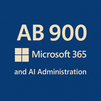
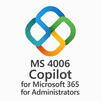
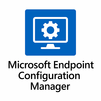
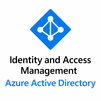


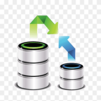
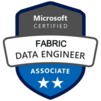

 Join our Live Instructor-Led online classes delivered by industry experts
Join our Live Instructor-Led online classes delivered by industry experts